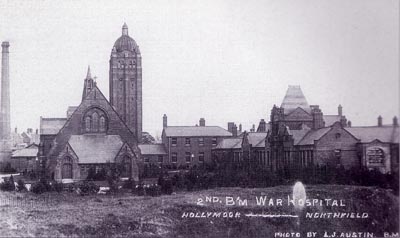Treatment and Recovery
Leading American psychiatrists Roy Grinker and John Spiegel published a manual for the treatment of psychiatric casualties of war in 1945. They rejected common myths that soldiers who developed mental health conditions lacked courage. They argued that every soldier had their breaking point.
This understanding was shared by staff at Hollymoor Hospital in Northfield, Birmingham. The severest psychiatric patients at Hollymoor were often Commandos. This contradicted the common belief within the military that experienced soldiers were immune from mental breakdown.

Credit: Andy Doherty, Birmingham Roundabout.
During ‘the Northfield Experiments’, psychiatrists at Hollymoor trialled group therapy. They needed to treat large numbers of patients with limited resources. Group therapy was later integrated into civilian psychiatry and is still popular today. Hollymoor also promoted creative occupational therapies, including art, theatre, and pottery making.

‘An ‘effort syndrome’ unit was set up at Mill Hill EMS Hospital in London. Maxwell Jones, the hospital psychiatrist, believed it was beneficial to educate patients about their conditions. The hospital created a ‘therapeutic community’. Staff encouraged patients to take responsibility for their health and join discussion groups. Mill Hill lowered the traditional barriers between patients and staff.
